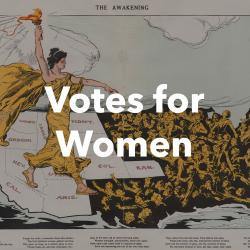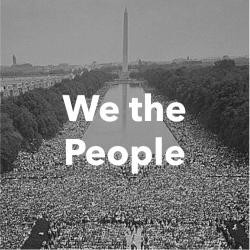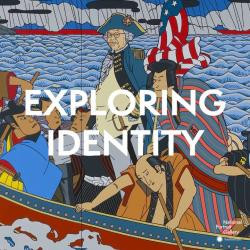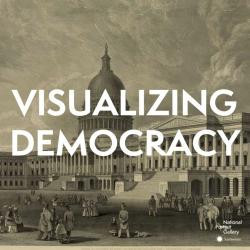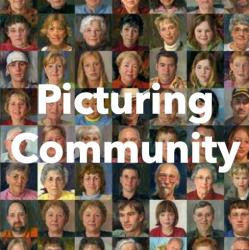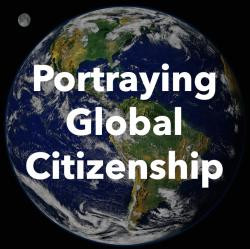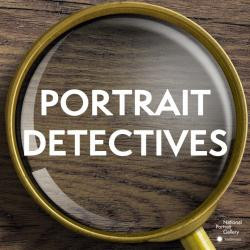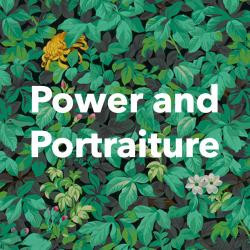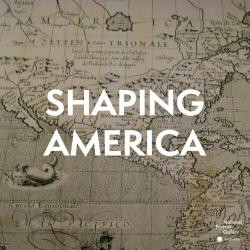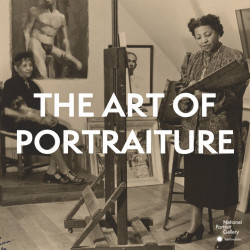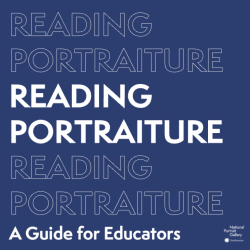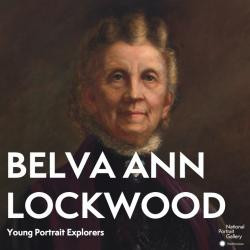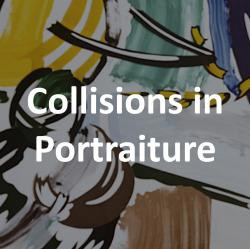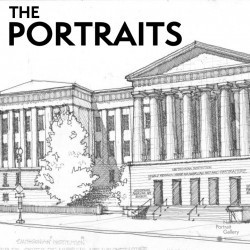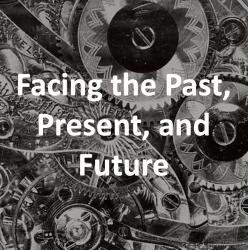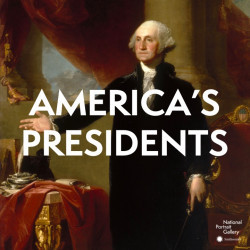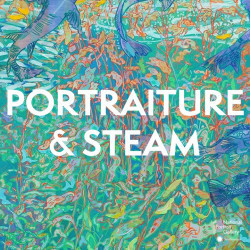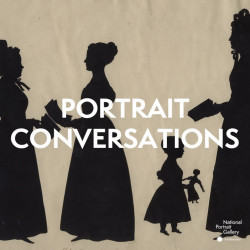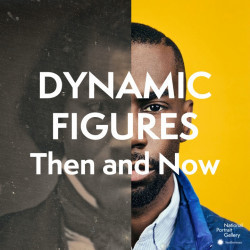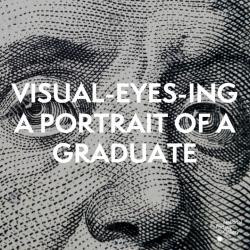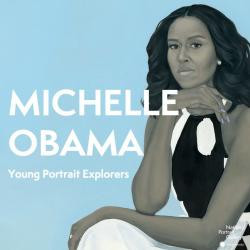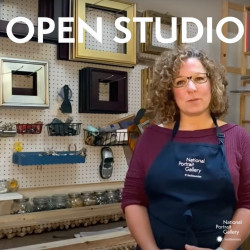Nicole Vance's collections
Votes for Women: A Portrait of Persistence
<p>Take a close look at the portraits and objects within “Votes for Women: A Portrait of Persistence” exhibition at the National Portrait Gallery. “Votes for Women” outlines the more than 80-year movement for women to obtain the right to vote as part of the larger struggle for equality that continued through the 1965 Civil Rights Act and arguably lingers today. This Learning Module highlights figures such as Lucy Stone and Alice Paul, but also sheds light on the racial struggles of the suffrage movement and how African American women, often excluded by white women from the main suffrage organizations, organized for citizenship rights (including the right to vote).</p>
<p>#NPGteach</p>
<p>#BecauseOfHerStory</p>
 Nicole Vance
Nicole Vance
47
We the People: Who are We as an American People?
<p>We the People: Who are We as an American People? explores the ways in which artists and sitters use portraiture as a means to convey American history and identity. Students will learn about American geography, culture, civilization, symbols, and the Civil War through the faces of the people who have shaped the United States of America.</p>
<p>#NPGteach</p>
 Nicole Vance
Nicole Vance
97
Exploring Identity through Portraiture
<p>This Learning Lab complements the National Portrait Gallery's student program, Exploring Identity through Portraiture.</p>
<p>Exploring Identity through Portraiture explores the ways in which artists and sitters use portraiture as a means to convey individual, community/cultural, and national identity. By analyzing portraits, including self-portraits, students will consider how the artists tell the sitters’ stories, paying attention to how the artists’ choices reveal some—but perhaps not all—aspects of the sitters’ identity. Students will explore how portraiture can be an avenue that they can use to represent their own identities and make meaning of what is important to them.<br></p>
<p><strong>Objectives</strong></p>
<p><strong></strong>After completing this lesson, students will be better able to: </p>
<p>• Examine how modern and contemporary artists use portraiture to reveal aspects of a sitter’s individual, community/cultural, and national identity. </p>
<p>• Identify key components of a portrait and discuss what one can learn about the sitter through these components. </p>
<p>• Discuss the artistic choices that portrait artists make and consider how such decisions can reveal the artists’ viewpoints and also influence the viewers’ understanding of the sitters’ identity. </p>
<p>• Use the museum’s collection as a gateway to investigating and exploring one’s own individual, community/cultural, and national identity.</p>
<p>#NPGteach</p>
 Nicole Vance
Nicole Vance
70
Portrait Detectives
<p>This Learning Lab complements the National Portrait Gallery's student program, Portrait Detectives.</p>
<p>Students will be transformed into Portrait Detectives, searching portraits for and analyzing clues to learn more about significant Americans. Through interactive discussions and sketching and writing activities, students will read, compare, and contrast portraits across the collection. This module is divided into the following themes to best support your curriculum and student interests: Presidents, Activists, Icons, and Scientists.</p>
<p><strong>Objectives:</strong></p>
<p><strong></strong>After completing this lesson, students will be better able to: </p>
<ul>
<li>Identify important Americans and analyze their contributions to U.S. History <br>
</li>
<li>Identify key components of a portrait and discuss what we can learn about the sitter through these components.</li></ul>
<p><a href="https://npg.si.edu/teachers/school-groups">Schedule</a> a virtual Portrait Detectives program with National Portrait Gallery educators.</p>
<p>#NPGteach</p>
<p><br></p>
 Nicole Vance
Nicole Vance
90
Power and Portraiture
<p>Power and Portraiture highlights the ways in which artists and sitters use portraiture as a means to convey power. By analyzing portraiture, students will consider how power is visualized, gained, used, justified, and revoked. Students will explore the powerful contributions to the history and culture of the United States through portraits of the following individuals:</p>
<ul><li>Rosa Parks</li><li>Belva Lockwood</li><li>Eunice Kennedy Shriver </li><li>LL Cool J</li><li>Henrietta Lacks</li><li>An Unidentified Enslaved Woman</li></ul><p><strong>Objectives:</strong> After completing this lesson, students will be better able to: </p>
<ul><li>Examine how modern and contemporary artists use portraiture to reveal aspects of a sitter’s individual, community/cultural, and national identity. </li><li>Identify key components of a portrait and discuss what one can learn about the sitter through these components. </li><li>Discuss the artistic choices that portrait artists make and consider how such decisions can reveal the artists’ viewpoints and also influence the viewers’ understanding of the sitters’ identity. </li><li>Use the museum’s collection as a gateway to investigating and exploring of the visualization of power.</li></ul><p><strong>Keywords</strong></p>
<p>Portraiture, Power, Rosa Parks, Civil Rights, Social Justice, Belva Lockwood, Women's Suffrage, Eunice Kennedy Shriver, Disabilities, Special Olympics, LL Cool J, Rap Music, Henrietta Lacks, STEAM, Enslavement, Sally Hemings, #NPGteach</p>
 Nicole Vance
Nicole Vance
52
Voices of Social Justice
<p>This Learning Lab complements the National Portrait Gallery's 2021-2022 student program, Voices of Social Justice.<br></p>
<p>Students will learn about some of the major figures who struggled to obtain civil rights for disenfranchised or marginalized groups. They will listen to stories of social justice and analyze portraits of individuals who broke barriers—from key nineteenth-century reformers to modern leaders—and will likely be encouraged to consider how they, too, can become civically engaged.</p>
<p><a href="https://npg.si.edu/teachers/school-groups">Schedule</a> a virtual Voices of Social Justice student program with National Portrait Gallery educators.</p>
<p>#NPGteach</p>
<p>Keywords: Social Justice, Activists, Civil Rights, Reform, Change, Disenfranchised, Abolition, Suffrage, Labor Rights, Citizenship Rights, Japanese Incarceration, Boycotts, Protest, March, Justice, Black Lives Matter</p>
 Nicole Vance
Nicole Vance
90
Young Portrait Explorers: Belva Ann Lockwood
<p><strong>Learning Objective: </strong>Learn about Belva Lockwood’s contribution to American history.</p>
<p><strong>Keywords</strong>: Belva Ann Lockwood, Young Portrait Explorers, Suffrage, Famous Women, American Women, Diploma, Lawyer, Graduation, Votes for Women, Supreme Court</p>
<p>#NPGteach</p>
 Nicole Vance
Nicole Vance
24
Collisions in Portraiture
<p>Collisions in Portraiture highlights the ways in which artists and sitters use portraiture to reveal what happens when cultures collide. By analyzing portraiture, students will consider how cultural collisions are visualized from the nineteenth to twenty-first centuries. Students will explore the powerful contributions to the history and culture of the United States through portraiture.</p>
<p><strong>Objectives:</strong> After completing this lesson, students will be better able to: </p>
<ul><li>Examine how modern and contemporary artists use portraiture to reveal aspects of a sitter’s individual, community/cultural, and national identity. </li><li>Identify key components of a portrait and discuss what one can learn about the sitter through these components. </li><li>Discuss the artistic choices that portrait artists make and consider how such decisions can reveal the artists’ viewpoints and also influence the viewers’ understanding of the sitters’ identity. </li><li>Use the museum’s collection as a gateway to investigating and exploring of the visualization of colliding cultures.</li></ul><p>#NPGteach</p>
<p><strong>Keywords</strong></p>
<p>Portraiture, Collisions, Harriet Tubman, Civil War, Stonewall, Roger Shimomura, Chief Joseph, Robert Rauschenberg, United Farm Workers</p>
 Nicole Vance
Nicole Vance
44
Explore! at the National Portrait Gallery
<p>This Learning Lab collection complements the National Portrait Gallery student Program, Explore!</p>
<p></p>
<p>The Explore! program introduces young students to portraiture. They will be exposed to what makes up a portrait and search portraits for clues to learn more about themselves and significant Americans. Through interactive discussions and hands-on activities, students will read, compare, and contrast portraits across the collection.</p>
<p></p>
<p>After completing this lesson, students will be better able to:<br></p>
<ul><li>Identify key components of a portrait and discuss what we can learn about the sitter through these components.</li></ul>
<p>#NPGteach</p>
 Nicole Vance
Nicole Vance
63
Portraiture and STEAM (Science, Technology, Engineering, Art, and Math)
<p>This Learning Lab Collection complements the National Portrait Gallery student program, Portraiture and STEAM.</p>
<p></p>
<p>Students will explore the ways portraiture can be a springboard to discuss STEAM concepts (Science, Technology, Engineering, Art, and Math). By analyzing portraits, students will consider the sitters’ stories and recognize their contributions to the various STEAM fields. During the program, there will be opportunities to examine a broad range of STEAM topics to allow for classroom connections and emphasis on relevance. </p>
<p></p>
<p>After completing the program, students will be better able to:</p>
<ul><li>Identify key components of a portrait and discuss what one can learn about the sitter through these components.</li><li>Identify and analyze the contributions that sitters made in their STEAM fields of expertise.</li><li>Use the museum’s collection and portraiture as a springboard to exploring a variety of STEAM concepts.</li></ul>
<p>#NPGteach</p>
 Nicole Vance
Nicole Vance
75
Portrait Conversations
<p>This Learning Lab Collection complements the National Portrait Gallery student program Portrait Conversations.</p>
<p></p>
<p>Through this discussion based program students will compare and contrast visual elements in portraits across different historical eras, paying particular attention to differences in style and media and to the variety of historical contributions represented. Students will read portraiture by identifying and analyzing the elements of portrayal to learn about the biography of the sitter.</p>
<p></p>
<p>#NPGteach</p>
 Nicole Vance
Nicole Vance
54
Dynamic Figures: Then and Now
<p>This Learning Lab Collection complements the National Portrait Gallery's DCPS third grade student program series, Dynamic Figures: Then and Now <br></p>
<p></p>
<p>The Dynamic Figures: Then and Now series utilizes portraiture to create cross curricular connections. During the academic year, DCPS third grade classes will have the opportunity to experience the National Portrait Gallery for three unique visits during the fall, winter, and spring. Whether a third grade class attends one, two or all three sessions, students will be exposed to the power of portraiture at varying degrees. This program aligns directly with learning goals for the third grade. Through interactive discussions as well as sketching, writing, and kinetic activities, students will read, solve problems, compare and contrast portraits across the collection. Students will learn how to “read” a portrait and recognize the value of portraiture in an array of settings and circumstances. </p>
<p></p>
<p>After completing this lesson, students will be better able to:</p>
<ul><li>Identify important Americans and analyze their contributions to U.S. History</li><li>Identify key components of a portrait and discuss what we can learn about the sitter through these components</li></ul>
<p></p>
<p>#NPGteach</p>
<ul></ul>
 Nicole Vance
Nicole Vance
54

